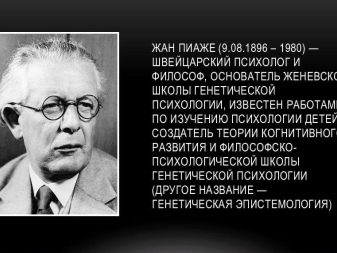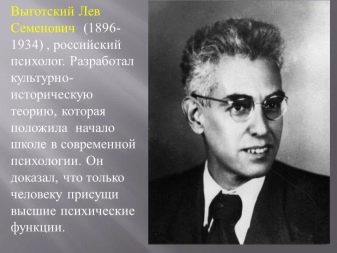The thought process involves some manipulation of knowledge, and therefore it is referred to the cognitive system. The transformation of information into a final product depends on the degree of cognitive actions of thinking.
Features
Cognitive science (from lat. Cognitionis - cognition) combines cognitive psychology, linguistics, neurophysiology, as well as the theory of cognition and artificial intelligence. The development of this science continues in several directions. The basis is the concept of biological evolution of Jean Piaget, the theory of rational thinking with the inclusion of the process of transforming external actions into the internal mental functions of Lev Vygotsky and the information approach to the system. The mechanism of the brain structure is studied using a tomograph and other modern scanning methods.


Cognitive thinking is inextricably linked with the cognitive process. It is responsible for the formation of concepts, decision making and development of reactions.
The type of cognitive thought activity depends on the personality, experience of interaction with other people. An important role is played by knowledge, ability to solve various problems, logic, attention, perception and memory of the individual.
In psychology, 3 types of such thinking are distinguished.
- Visually effective type It is aimed at solving certain problems associated with constructiveness, production and organization of activities. It is inherent in children under 3 years of age, the cognitive process of which is inextricably linked with the involvement of the hands.
- Clearly shaped look converts generalized thoughts into concrete images. It is formed in children from 4-7 years. At this time, the connection of consciousness with practical movements is not as strong as before.
- Abstract thinking is associated with abstract reasoning. It is observed in schoolchildren and adults who can operate with generalized concepts, devoid of immediate visualization and images.

The nature of cognitive thinking styles has not yet been fully explored. Let's consider some of them.
- Representatives of a simple style of cognitive thinking interpret the ongoing processes in a simplified form. Owners of a complex style have a tendency to multidimensionality in perceiving existing concepts and revealing in them a multitude of interrelated parties.
- Holders of specific mental activity do not tolerate uncertainty, depending on status and authority. They have black and white thinking, stereotyped decisions. People with abstract cognitive thinking are prone to risk, independence, flexibility. They are characterized by an extensive combination of concepts.
- People with an analytical style pay attention to the difference in objects, focus on their distinguishing features, the smallest elements. A synthetic style is inherent in individuals who tend to focus on the similarity of information and find common signs in them.
- Impulsive style owners tend to make instant decisions with their choice. Haste often leads to errors. Those who have reflective style act in slow motion when making decisions, so the appearance of errors is minimized.
- Some people have a wide distribution of attention to many details at the same time.. Such individuals are able to scan the displayed situation. Other individuals can only superficially, fragmentarily characterize facts and phenomena that caught their eye. They have the inherent ability of narrow control, which is called the focusing style.
- Tolerant subjects are able to accept controversial events that do not correspond to the ideas of man. They can analyze them according to available characteristics. Intolerant people are not ready for cognitive experience, where there is information contrary to their knowledge.

Principles
The cognitive system includes conscious and unconscious thinking. Researchers have identified 6 principles for separating one from the other.
- Concept of unconscious thought based on conscious and unconscious types of thinking. Conscious thinking is associated with cognitive action aimed at a task or object that are in the center of attention. In an unconscious thought process, events fall outside the focus of the reflecting individual.
- Capacity law involves storing in working memory no more than 7-9 elements of information. This rule does not apply to unconscious thinking.
- Top-down and bottom-up aspects indicate the issuance of a ready-made solution to the subconscious sphere after absorbing the facts as a whole, while conscious thinking processes data systematically through various schemes and definitions.
- Weight principle It boils down to the fact that the best decisions are made by people at moments of some distraction from important and complex tasks. Consequently, unconscious thinking is often more effective than conscious reasoning.
- Rule principle claims that the answers found at an unconscious level do not always comply with the laws of logic, since they are based on associations. Conscious decisions are always based on formal rules.
- The principle of rapprochement (convergence) involves insight into the problem and forgetting about it. Then unconscious thinking takes effect, and the impasse is easily resolved. A certain collaboration is formed between conscious and unconscious thinking.

Development
Cognitive thinking develops with inner speechtherefore, the thought process depends on the language. Language and thought are inseparable.You need to train them daily, otherwise achieving good results is difficult.
Equally important is proper nutrition. The brain should be supplied with a large number of vitamins and minerals. It is useful to eat nuts, vegetables, chocolate, eggs. Sports, walks in the fresh air have a positive impact on the development of cognitive cognitive activity.
Well develop this type of thinking:
- games of checkers, chess, backgammon, poker;
- assembly of puzzles, Rubik's cube;
- solving crosswords, puzzles, charades;
- solving mathematical problems;
- various games in "words", "cities";
- learning a foreign language with establishing a connection with the mother tongue, searching for associations;
- reading books with an analysis of each page read and fantasizing on the topic of further events.



Synchronized drawing enhances motor skills and improves eye coordination. You should take a large sheet of paper and a pencil in both hands. Then you need to simultaneously start mirroring objects. With two hands you need to draw circles, ovals, triangles, squares, rectangles and other objects.
The next task is reduced to the continuous writing of eights. First they are drawn alternately with the left and right hand, then synchronously with both brushes. Then, along with the eights, they write the lowercase letter "a", followed by the numbers "8" again. In the same way, the following letters of the alphabet are interspersed with eights.
Experts recommend improving memory by looking at an old photo album. Development takes place along with memories of past events.
All training exercises help to maintain brain tone throughout the day, increase efficiency, maintain a clear and sharp mind until old age.
Main mistakes
Often a cognitive thought process leads some beliefs in distortion. And then appear template deviations in thinking. For example, there are cases of people being inclined to deny the opinions of strangers who are not in their group and to fully agree with like-minded classmates, even if those statements are unfounded and unjustified.

Mistakes associated with cognitive bias are many. We will list the most common of them.
Thinking in the framework of the template "all or nothing"
Some people, especially perfectionists, tend to go to extremes. They believe that if the task is not 100% complete, then it is not ready. The call master was late, which means he is a poor specialist, and you should not resort to the services of the company where he works. If a dieter accidentally ate a pie, then there is no longer any reason to stick to a diet, as all efforts are reduced to zero.
Generalization of special cases
Any accidental misconduct is an occasion to unjustifiably transfer a single case to a combined action. A separate event leads people to the conclusion that this always happens. Or, conversely, never. A person who failed to submit a report on time worries that now he will never be promoted. The employee poorly fulfilled the order, which means that he is a poor employee and always does poorly with all tasks.

Excessive dramatization
Sometimes an insignificant incident turns into a catastrophe. A novice athlete during the jump received a slight injury, after which he decides that this sport is not suitable for him, since he is unlikely to land correctly.
Psychologists recommend keeping a diary in which to fix all your fears. Be sure to highlight the positive and negative points.
Over time, a person begins to see positive moments and learns to derive himself from any unpleasant situations.
Labeling
Often in teams is fixed strong opinion about a person due to a particular event. For example, a colleague at a corporate party got drunk. A drunkard label is hung on him. Although in reality, this could be an isolated case that will never happen again. Another employee delved into their own thoughts and did not greet others. He was immediately considered an arrogant ignoramus.
Labels generate negative emotions and distort reality. We must learn to objectively assess the situation, not relying on a single fact. Once a latecomer does not always demonstrate his lack of discipline. You need to be able to separate emotions from specific phenomena.

Unfounded conclusions
Sometimes a person takes on the function of speculation and tries to read the thoughts of another person, concluding that she is negative about her person. A person unreasonably believes that they are treated badly.
Often, people for no reason predict future events not in their favor. For example, during the presentation, the speaker made several mistakes that gave him reason to believe that now he would never be invited to the conference.
You can’t speculate on speculation. Unreasonable conclusions lead to defeat. One must always rely on real events without predicting the future.
Denial of positive
Some do not want to notice their own successes and achievements. It seems to them that they are not worthy of praise, since any person would do the job no worse. In this case it is important to realize that everyone periodically deserves recognition. And this does not imply his arrogance and pride.











